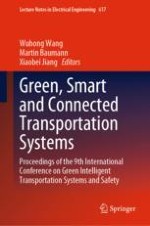2020 | OriginalPaper | Buchkapitel
Research on Driving Behavior of Mountain City Passenger Car Drivers Based on GPS Data
verfasst von : Ying Chen, Jin Xu
Erschienen in: Green, Smart and Connected Transportation Systems
Verlag: Springer Singapore
Aktivieren Sie unsere intelligente Suche, um passende Fachinhalte oder Patente zu finden.
Wählen Sie Textabschnitte aus um mit Künstlicher Intelligenz passenden Patente zu finden. powered by
Markieren Sie Textabschnitte, um KI-gestützt weitere passende Inhalte zu finden. powered by
